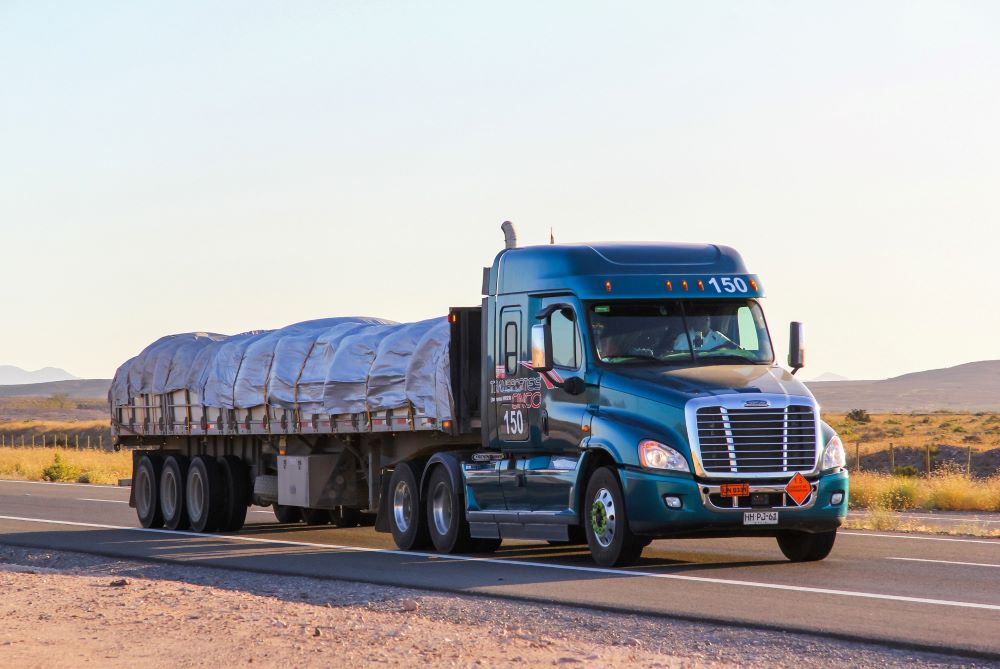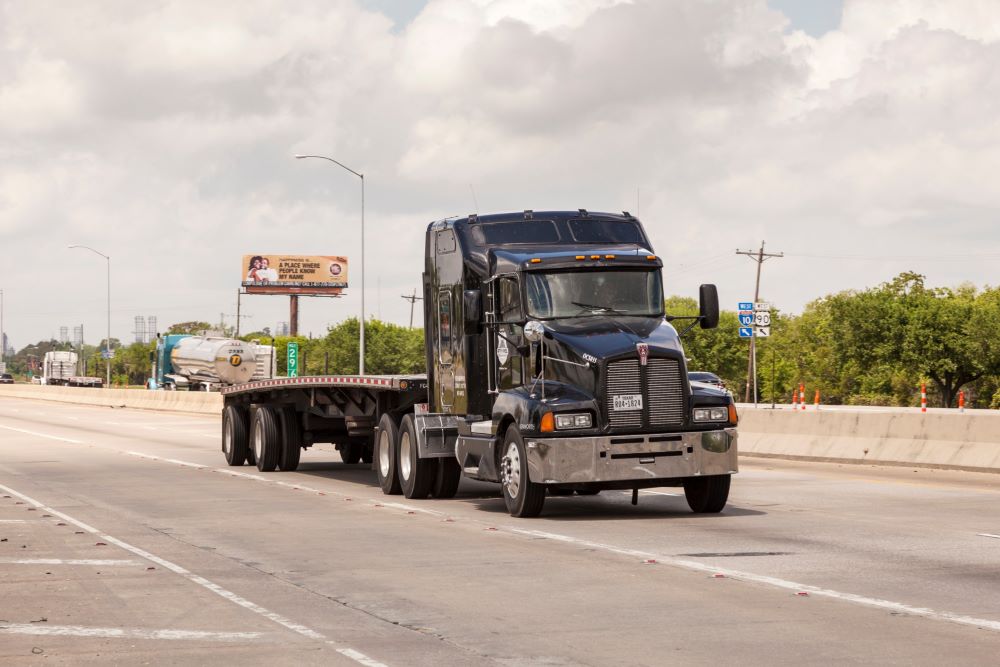
Proper Load Securement
Proper load securement involves safely restraining cargo to prevent it from shifting or detaching during transit, ensuring the safety of the driver, cargo, and others on the road.
The Importance of Proper Load Securement for Flatbeds
Proper cargo securement for flatbeds is essential for three main reasons:
- Unsecured or improperly secured cargo can fall from trucks, creating hazardous conditions and traffic diversions. By the numbers, the National Highway Safety Administration (NHTSA) estimates that over 700 fatalities and 17,000 injuries each year are due to accidents caused by unsecured loads.
- Securing cargo the right way protects it from damages and theft during transportation, ensuring the load arrives at its destination in a pristine condition. This minimizes losses for trucking companies since they’re often responsible for cargo damages.
- Failing to comply with all federal and state guidelines can disrupt your business operations and affect cash flow. You might also suffer financial losses from hefty fines due to non-compliance.
Flatbed Strapping Regulations
To succeed as a flatbed truck driver, you must know the Federal Motor Carrier Safety Administration (FMCSA) flatbed strapping regulations and Commercial Vehicle Safety Alliance (CVSA) safety standards. These guidelines ensure secure loading practices and include general rules that apply nationwide.

- Choose the right securement equipment: Use straps, chains, or wire ropes based on the cargo’s size, weight, and type. Items that can roll must be stabilized with wedges or chocks.
- Ensure correct working load limits: The combined working load limit of all securement systems should be at least half the cargo’s weight.
- Use the proper number of tie-downs: Most loads need at least four, though this may vary by cargo size and weight. Use a securement calculator to determine the exact number needed.
- Double-checking all connections before departure
FMCSA outlines commodity-specific securement requirements for transporting different types of goods, such as logs, metal coils, steel or concrete beams, heavy equipment, vehicles, and machinery, among others. Here’s a quick breakdown of essential cargo securement regulations you should know.
8 Tips on Securing a Load on a Flatbed
Knowing how to secure loads safely on flatbed trailers can be challenging without the right steps. Here are key factors to ensure cargo is properly secured on commercial freight carriers.
Understand Weight Distribution
Cargo weight and trailer dimensions impact stability. Understanding both helps ensure even load distribution, determine the number of ties needed, and decide their placement for secure transport on flatbed trailers.
Conduct a Pre-Load Inspection
Take some time to inspect your trailer before loading freight. Check for any damages, including loose bolts and nuts. You want to identify any issues that may prevent proper load securement and handle them in good time.
Choose the Correct Equipment
To choose the right equipment, consider two main factors:
- The size, shape, and weight of the cargo
- The road and weather conditions you’ll be operating in when moving the load
Use wire ropes or ratchet straps for large loads, as they’re supportive and easy to handle; for rough terrain, chains or cables are better suited. Ratchet straps work well for softer materials like lumber. Always confirm securement equipment meets DOT weight limits, and inspect for damage before each use.

Position the Cargo
Ensure the trailer is level before loading to prevent uneven weight distribution that could cause tipping. Load from front to back, positioning heavier items near the center to reduce side leverage and evenly distribute the weight across the truck.
Secure the Load
Once the cargo is in position, secure it with ties. FMCSA requires you to use at least one tie-down per ten feet of cargo plus any fraction over ten feet. For instance, you’ll need four tie-downs for a 35-foot-long freight.
Place a Tarp if Necessary
Tarps protect cargo from harsh weather conditions. If driving in bad weather, pick the correct tarp for your needs based on the weather and the type of cargo you transport. Some tarps are designed to cover lumber or steel when it’s rainy, while others protect cargo from the wind.
Ensure the tarp is secure on the trailer and has no wind pockets. If it comes loose and blows away in transit, it can obstruct the view of other motorists, leading to accidents.
The Importance of Double-Checking
Before you get into the cab and start your journey, double-check the freight to ensure it’s secure and all straps are holding as they should.
Stress from tightening straps on the corners of the flatbed trailer can cause cutting and abrasion, making them weaker as you drive. Double-checking helps you identify these issues and take the necessary steps to enhance safety.
Ongoing Monitoring and Adjustment
Some straps, especially those not protected by corner protectors, can give in during transport. To prevent this, monitor the secured load frequently – after every 50 miles or so – to ensure all goods remain anchored throughout the trip.

Final Thoughts
The most significant point to keep in mind when securing cargo for transport is that the freight must stay fastened to the floor of the trailer throughout the trip. Different flatbed load securement rules apply to different cargo types and road situations. We’ve outlined how to secure loads safely on flatbed trailers to keep yourself safe, and stay on the right side of the law.
One last tip – assemble and prepare all the tools you’ll need to perform the task correctly before you begin. It will make the procedure smoother and more efficient.
Also, consider exploring commercial truck insurance options for additional cargo protection. So you can conduct your operations with peace of mind. For more tips to help you succeed in your trucking endeavors, visit our blog.


